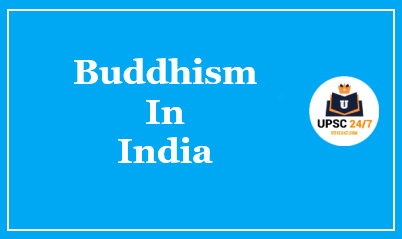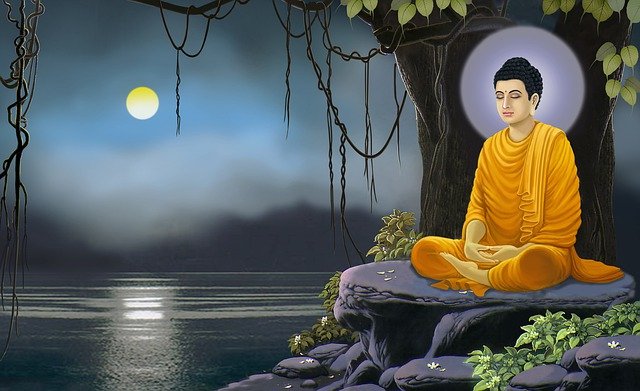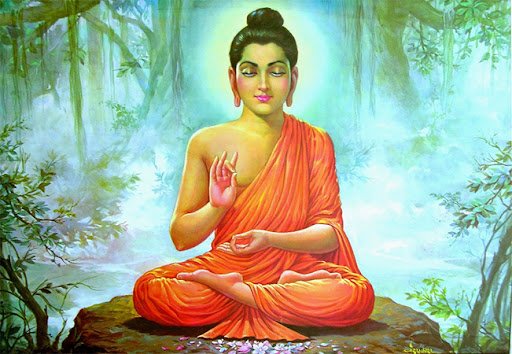Buddhist Councils UPSC | First | Second | Third & Fourth Councils – Budhist Councils Is A very Important topic For Exam Point Of View . Almost In Each And Every Government Competitive Exam Questions Asked From This Topic . So For Government Job Aspirants We Are Providing A Full Detail Analysis of The Topic . After the death of the Gauthama Buddha, several assemblies were convened to settle doctrinal disputes and to recite Buddhist texts. These Assemblies were known as Buddhist Councils . There Were Total 4 Buddhist Councils Which Were Held .

Buddhist Councils UPSC | First | Second | Third & Fourth Councils
Some Important Points About Buddhism
- Founded by Gautama Buddha (Sakyamuni) known originally as Siddhartha.
Teachings of Buddha:
- Four Noble Truths (Arya satyas) – Dukkha, Samudaya, Niroda, and Magga.
- Eight-Fold Path (Ashtangika Marga) – Right view, Right resolve, Right speech, Right action, Right livelihood, Right effort, Right mindfulness and Right samadhi (“concentration”).
- Three Jewels (Triratnas) – the Buddha, the Dharma and the Sangha.
Code of Conduct.
- Belief in Nirvana.
- Belief in Ahimsa.
Buddhist Sangha:
- It consisted of monks and nuns, who acted as torchbearers of the dhamma.
- The worshippers were called upasakas.
See Also – Buddhism UPSC | Origin | Teachings | Buddhist Councils | Literature
| First Buddhist Council | - Venue: In Sattaparnaguha Cave situated outside Rajgriha (the modern city of Rajgir).
- Year: 486 BC.
- King: Ajatasatru, son of King Bimbisara (Haryanka Dynasty).
- Presiding Priest: Venerable Maha Kasyapa with 500 monks.
- Took place 3 months after the Buddha’s Passing.
- The First Buddhist Council collected together and arranged the Buddhist Scriptures known as the Pali Tipitaka.
- Vinaya Pitaka which mainly contains the rules of the Buddhist order. This was recited by Upali.
- Suttapitaka was recited by Ananda. It contains the great collections of Buddha’s sermons on matters of doctrine and ethical beliefs.
|
| Second Buddhist Council | - Venue: Vaishali.
- Year In Which Council Held : 386 BC
- King: Kalasoka (Shisunaga Dynasty).
- Presiding Priest Was : Sabakami.
- Took place 100 years after the Buddha’s passing.
- In order to settle a serious dispute on Vinaya.
- The dispute arose over the ‘Ten Points.’
The specific ten points were: - Storing salt in a horn.
- Eating after midday.
- Eating once and then going again to a village for alms.
- Holding the Uposatha Ceremony with monks dwelling in the same locality.
- Carrying out official acts when the assembly was incomplete.
- Following a certain practice because it was done by one’s tutor or teacher.
- Eating sour milk after one had his midday meal.
- Consuming a strong drink before it had been fermented.
- Using a rug which was not the proper size.
- Using gold and silver.
The key issue was the use of ‘gold and silver’, which is an Indic idiom that includes any kind of money. |
| Third Buddhist Council | - Venue: Pataliputra (today’s Patna).
- Year: 250 BC.
- King: Ashoka (Maurya Dynasty).
- Presiding priest: Mogaliputta Tissa (Upagupta).
- Its objective was to reconcile the different schools of Buddhism and to purify the Buddhist movement, particularly from opportunistic factions which had been attracted by the royal patronage.
- The responses to doctrinal questions and disputes formulated at the Third Council were recorded by Moggaliputta Tissa in the Kathavatthu, one of the books of the Abhidhamma Pitaka.
- After This Council The Codification of Abhidhamma Pitaka, dealing with Buddhist philosophy written in Pali.
|
| Fourth Buddhist Council: | - Venue: Kundalavana, Kashmir.
- Year: 72 AD
- King: Kanishka (Kushan Dynasty)
- He was a patron of Buddhism and was instrumental in spreading the religion in north-western borders of India.
- Presiding Priest: Vasumitra; deputed by Asvaghosha.
- The fourth Buddhist Council had to deal with a serious conflict between the Sarvasthivada teachers of Kashmir and Gandhara.
- Sarvasthivada doctrines were organized into three large commentaries on the Pitakas.
- Final division of Buddhism into Mahayana & Hinayana sects Took Place In 4th Buddhist Council .
|








